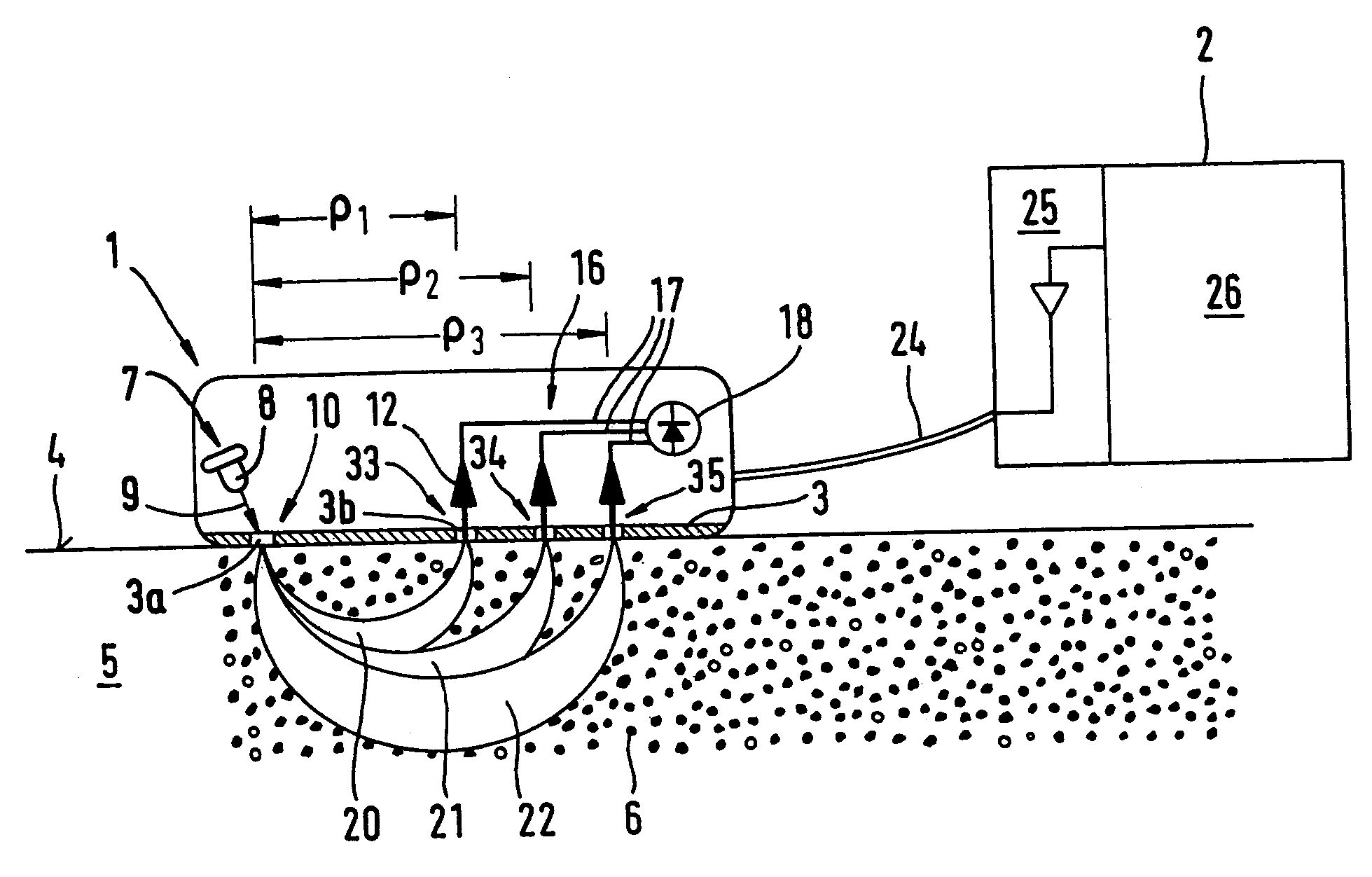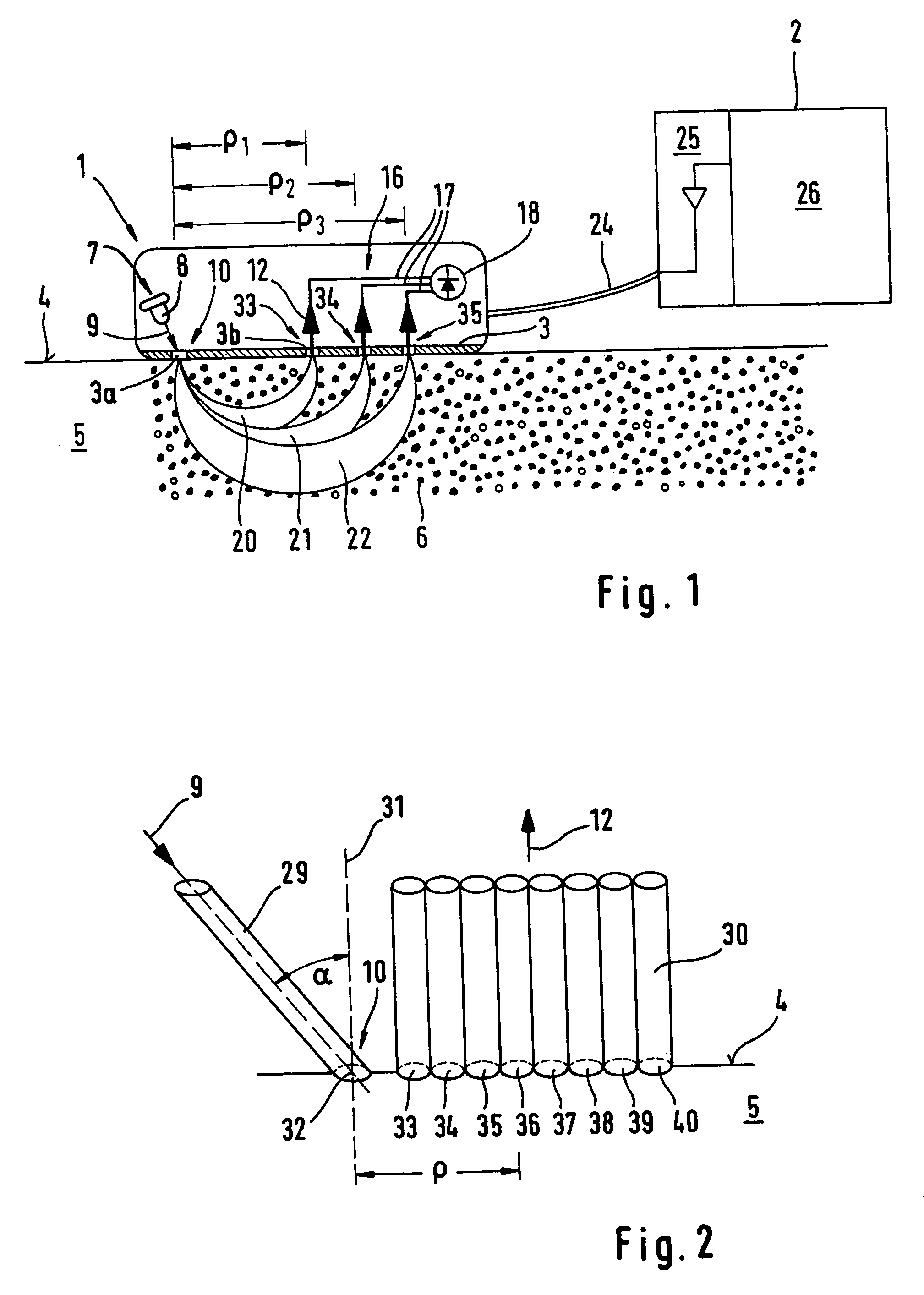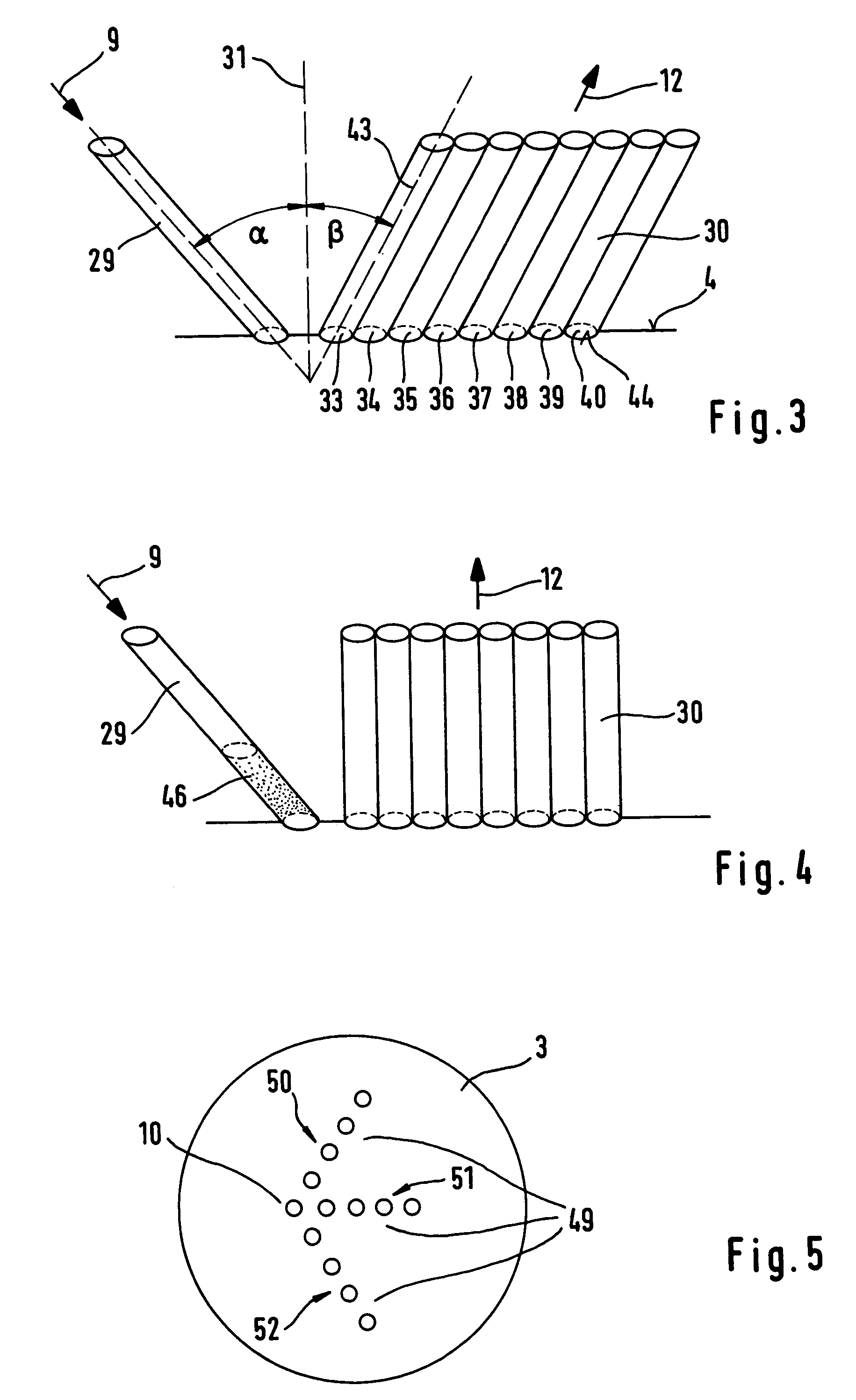Method and device for determining a light transport parameter in a biological matrix
a biological matrix and light transport technology, applied in the field of biological matrix light transport parameter determination, can solve the problems of inability to achieve practical significance of inability to monitor the blood sugar level continuously, and inability to achieve the determination of glucose concentration in the biological matrix. the effect of reducing the number of experiments
- Summary
- Abstract
- Description
- Claims
- Application Information
AI Technical Summary
Benefits of technology
Problems solved by technology
Method used
Image
Examples
Embodiment Construction
[0043]The device for the selective determination of μs in a biological matrix shown in FIG. 1 in a highly schematic manner essentially consists of a measuring head 1 and a signal processing and evaluation unit, 2. Hereinafter, reference will be made to skin tissue as an example of the biological matrix.
[0044]Measuring head 1 is placed with the bottom side of a skin contact plate 3 against a surface 4 of the skin 5 containing a large number of scattering centers 6. Light irradiation means 7 with a photodiode 8 are located inside measuring head 1 and serve to irradiate primary light (arrow 9) through a light irradiation window 3a at a light irradiation site 10 into the biological matrix 5.
[0045]Secondary light symbolized by arrows 12 and exiting at three detection sites 33, 34, and 35, which are defined by detection windows 3b of skin contact plate 3, is detected by detection means which are jointly denoted 16. In the embodiment shown, the detection means 16 enclose light-guiding fibe...
PUM
 Login to View More
Login to View More Abstract
Description
Claims
Application Information
 Login to View More
Login to View More - R&D
- Intellectual Property
- Life Sciences
- Materials
- Tech Scout
- Unparalleled Data Quality
- Higher Quality Content
- 60% Fewer Hallucinations
Browse by: Latest US Patents, China's latest patents, Technical Efficacy Thesaurus, Application Domain, Technology Topic, Popular Technical Reports.
© 2025 PatSnap. All rights reserved.Legal|Privacy policy|Modern Slavery Act Transparency Statement|Sitemap|About US| Contact US: help@patsnap.com



